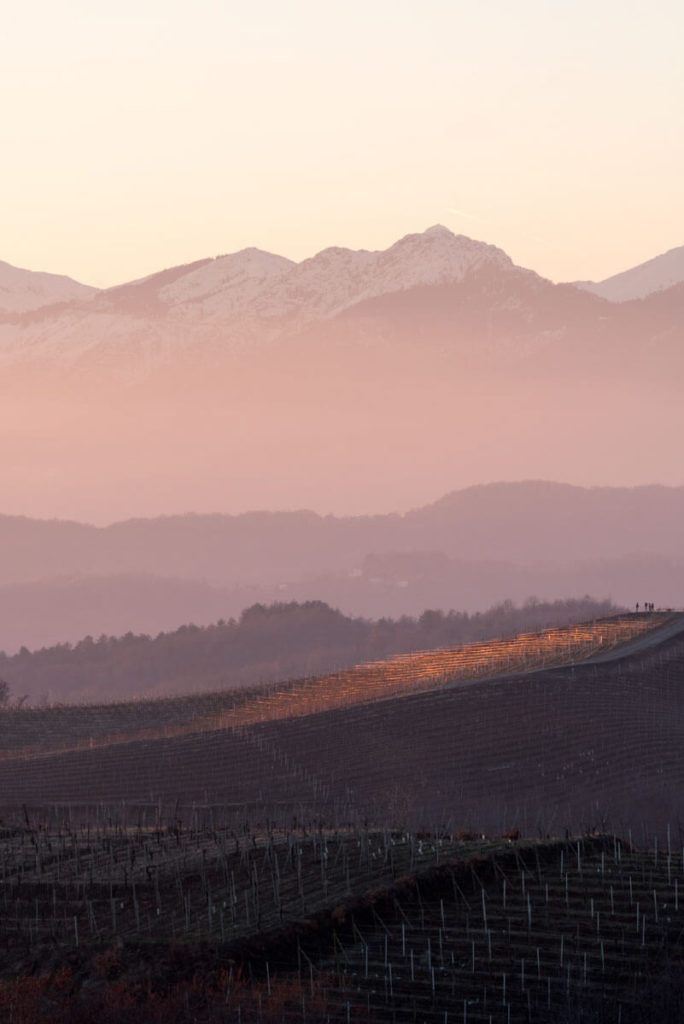Alto Piemonte
Less known than other very famous area of Piedmont as well as Langhe, Monferrato and Roero, Alto Piemonte includes the area from the basin of “Po” river and the Alps including the upper province of Turin, the provinces of Biella, Vercelli, Novara and Verbano Cusio Ossola. This part of the region always had an excellent reputation as an industrial and commercial division thanks to the development of the textile and metalworking sector known immediately after the end of II World War.
Yet, both data of the beginnig of the XX cenntury and more recent studies as Alberto Pattono’s books on wines of Alto Piemonte, confirm that, before the advent of industry, this portion of the region was composed of 40,000 hectares of vineyards and a glorious wine-growing past, despite the damage caused by the scourges of the vine of the early last century. During the years vines was gradually forgotten because of new employment opportunities and better living conditions offered by industry and economic boom.

The definition Alto Piemonte although has no defined and real boundaries and was created to identify an area with strong and ancient traditions, amazing landscape and unique food and wine heritage
Geographically, the landscape is rich and multifaceted: from the southern border occupied by “Pianura Padana” plain where, between the provinces of Vercelli, Biella and Novara, was born and spreads the cultivation of rice passing through hills, valleys and lakes until reaching the Alps and the second highest peaks in Europe: “Monte Rosa” massif.
In this context, the wine-growing reality is distinguished by the richness and fragmentation of its sub-areas both in terms of climate and geology. The common denominators are the acid reaction soil and the Nebbiolo vine, locally known as “Spanna", flanked by some historical and indigenous red grape varieties such as “Vespolina" or “Ughetta di Ghemme", ”Uva Rara" or “Bonarda di Gattinara", ”Croatina” or “Spannibièu" and a curious and ancient white grape variety called Erbaluce, also called “Greco Novarese".
Alto Piemonte and its terroir
Alto Piemonte wines are divided in sub-areas characterised by presence of historical denominations, but also for the peculiar climate conditions and unique geological composition of the soils where vines grows, very different from area to area.
Gattinara DOCG
Bramaterra DOC
Coste della Sesia DOC
Boca DOC
A recent study has shown the presence of the remains of an ancient volcano re-emerged over the millennia that actually compose the soils of the vineyards between the villages of Boca, Gattinara, Roasio and their neighborhood. Walking thorugh these hills it is easy to see sands and blocks of rocks, such as quartz and porphyry, reddish in colour.
Canavese:
Carema DOC
Erbaluce di Caluso DOCG
Novarese:
Fara DOC
Sizzano DOC
Ghemme DOCG
Colline Novaresi DOC
Soils of morainic origin composed of debris and pebbles, shaped over the millennia by the glaciers that stretched from the nearby mountains to the valleys following the path of orographic basins
Lessona DOC
Coste della Sesia DOC
Lessona enjoys a curious and unique composition in the local landscape: the hills on which the vineyards stand are largely composed of fossils and ancient Pleistocene sands with a very low pH.
